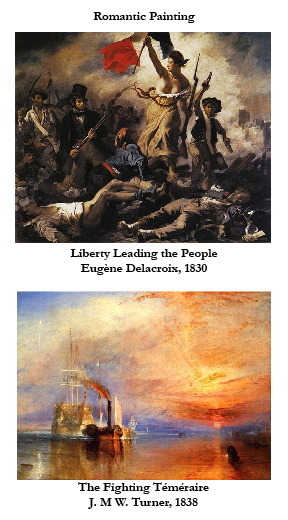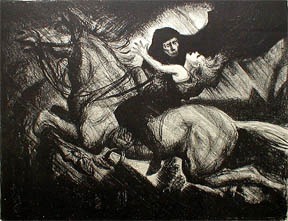Lecture 20
The Age of Romanticism
To cast light into the depths of the human heart— the artist's mission.
—Robert Schumann
Introduction to Romanticism
C.E. c.1810-1900
While the watchwords of the classical era were calculated elegance, order, controlled emotion and balance, romanticism, on the other hand, valued extremes of emotion, often at the expense of order and balance. The early romantics rebelled against the rules of forms, especially sonata form, which, they found, stifled their creativity. We look at the early romantics, Schubert, Schumann and Chopin.
Topics covered:
- introduction to romanticism
- style features included an interest in:
- a new personal style of self-expression
- ever-increasing emotional palette
- nationalism
- fascination with nature
- fascination with the supernatural
- an increased use of chromaticism
- more frequent changes of key, venturing further from the home key (tonic)
- the last two musical style features were of interest mainly in the service of greater emotional range of expression
- the miniature, character piece
- German lied
Objectives:
- distinguishing romantic style from the classical
- hearing the ever-increasing emotional palette of 19th c. music
- hearing an increased use of chromaticism
- hearing more frequent changes of key, venturing further from the home key (tonic)
- familiarity with the the miniature, character piece, the German lied
Assignments:
- watch lecture 20 (in multiple parts for quicker download)
- review previous chapters, as necessary
- read textbook, Chapters 20-21
- As you are reading your textbook, go through the Listening Exercises in textbook sequence, listening to the examples provided.
- regarding developing listening skills: you should be in the habit of developing your listening skills early in the game - the assignments will get more complex through the semester and you may find yourself unable to keep up. As simple as these early assignments may seem to some of you, they will help to keep you on the right track, and help you develop the skills required for a greater appreciation in listening to music, including the music that you listen to for your own enjoyment. Of course, those objectives are in total sync with the success you hope to have in this class. Remember that your ability to recognize the music on your CDs will be tested and will, of course, impact your grade.
Audio / Video lecture
- click lecture segments below in sequence
- presented in several segments to reduce download time
- total lecture time: approx. one hour 15 minutes (all segments included)
- can be downloaded for portable media players by right clicking each segment link and choosing save option. (note: older Macs and Mac notebooks with single-button mice: control-click)
Video Timeline for the Romantic (very short)
- some important dates and events, accompanied by music generally applicable to the period
- To give you a better perspective on the period and its composers,
- I might suggest that you watch this at least twice—
- once before the first lecture covering the period
- once more after the last lecture covering the period.
Lecture 20.1
Introduction to Romanticism

Lecture 20.2
Style Features of Romanticism
Lecture 20.3
Schubert and Schumann Lieder


Lecture 20.4
Schumann and Chopin Piano Pieces